Gazing across the tranquil beaches of Seybaplaya, a small beach town on the South Eastern coast of the Gulf of Mexico, you’d find it hard to imagine that between April and October these soft sands will play host to thousands of unlikely visitors. Perhaps more surprising is the lone character responsible for ensuring their survival: a 33-year-old, biologist and Nordic-folk-metal enthusiast: Luis Antonio Góngora Dominguez is ready for spring, a season which beckons the arrival of the critically endangered Hawksbill sea turtle.
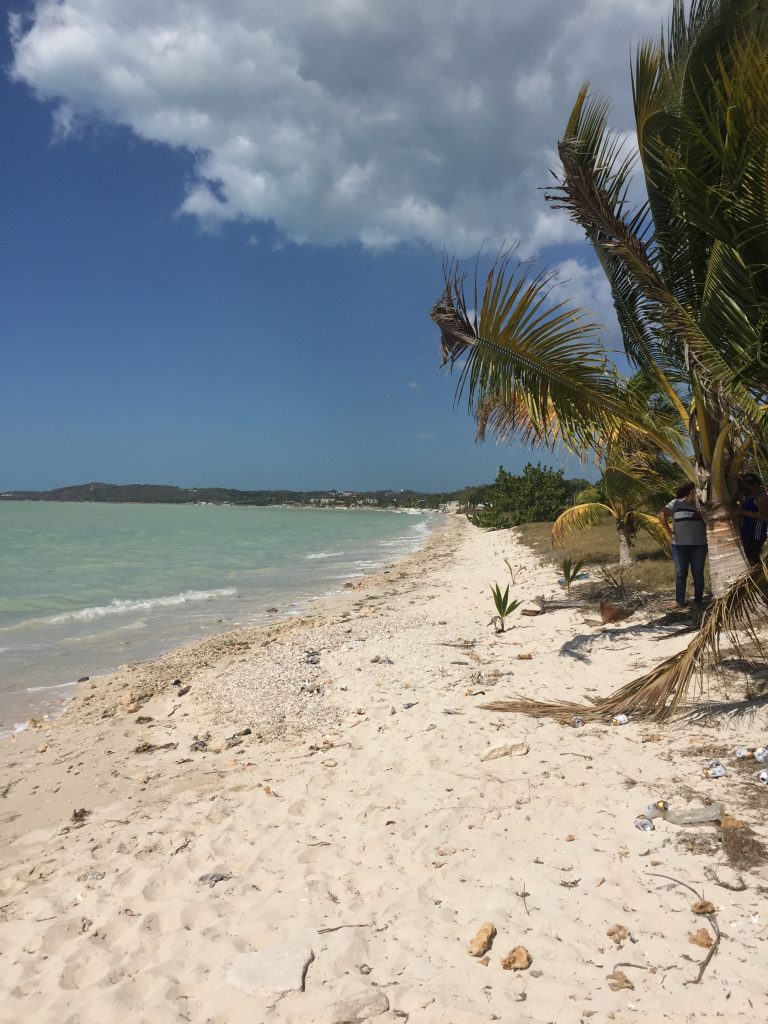
Of the seven species of sea turtle that exist, five can be found in the Gulf of Mexico and all are endangered. The species under the protection of Luis is the Hawksbill (Eretmochelys imbricata). These turtles are under critical threat, with their population having declined by around 80% in the last century and a half. National Geographic reports estimates of only around 25,000 nesting female Hawksbills active today, with 30% of the global population in the Mexican Gulf and the Caribbean.

As his bare feet step onto the bright white sands of Payucan, Luis stretches his tattooed arms wide mirroring the two arms of pier which border this expanse of beach, the demarcation between the bright sands on the right and the vast industry which towers menacingly to the left, just beyond the spit. This beach is just one of the three between which Luis will be reconnoitering for six months of the year during the staggered nesting times of several dozen quiet reptiles. Each beach is unique, as are the threats they pose.
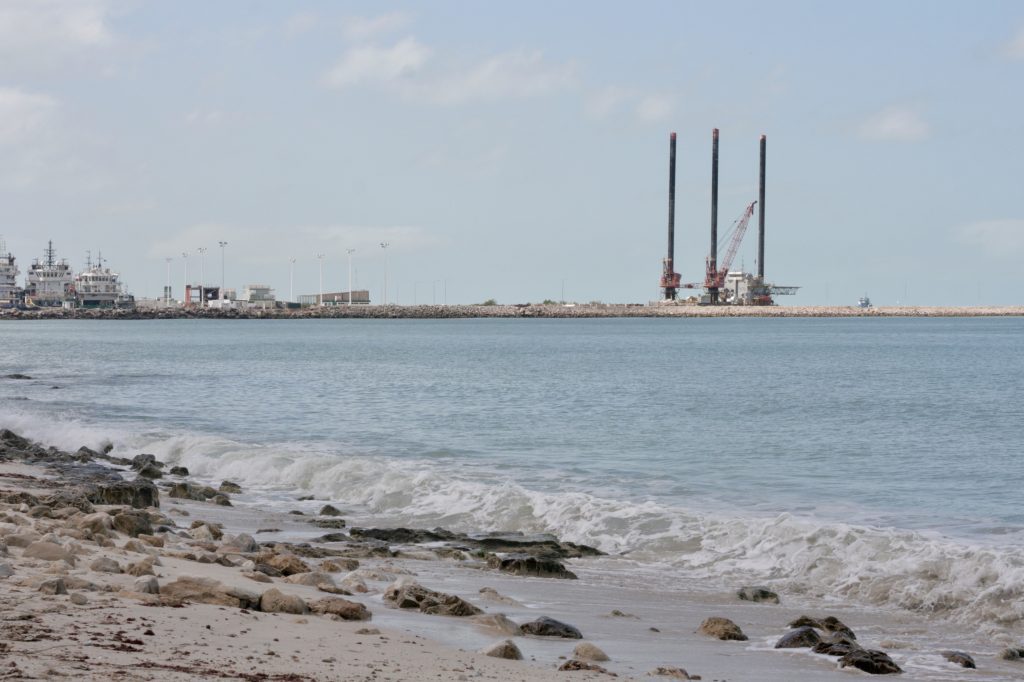
The peaceful animals suffer a violent start to life. On average, a mere one in every thousand sea turtle hatchlings survive to adulthood. The reason for this is manifold, with many scavenging predators assailing the young marine animals on land – before they even begin the journey to the waters in which they thrive. If they’re lucky enough to escape the nest, more perils await.
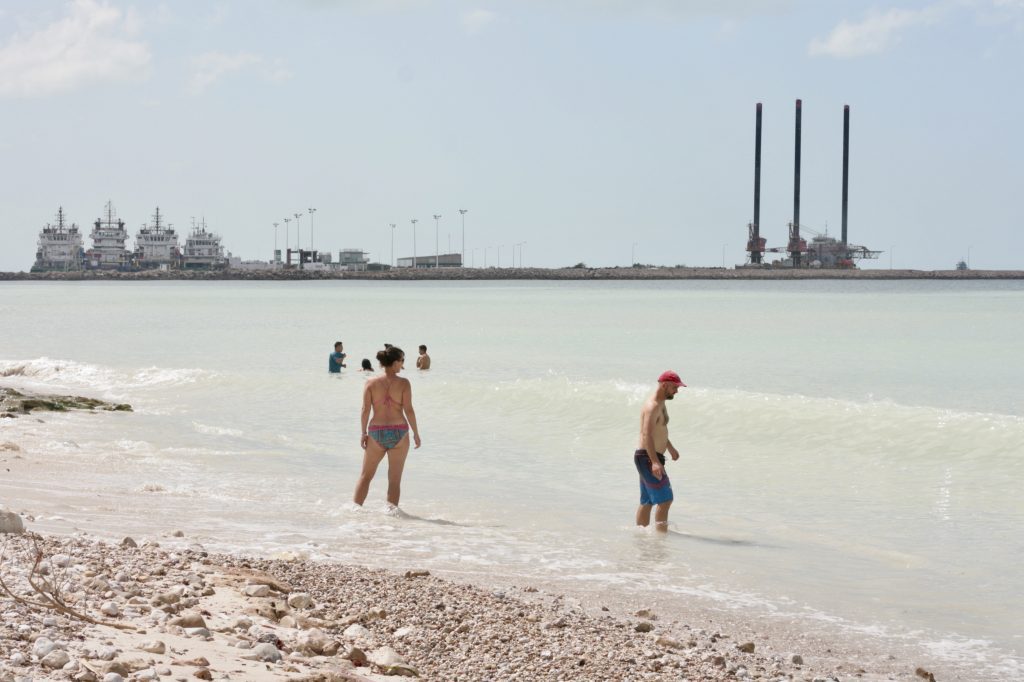
Luis’ favoured stretch is Payucan. There are fewer hazards here than other parts of the coast, yet its palm trees still hide a litany of dangers. In an attempt to annex a section of this paradise, many people fortify their beachfront holiday retreats by erecting borders. Illegal stone walls with deep foundations encroach onto the beach and force turtles closer and closer to the water’s edge – dangerous ground for nesting, with hatchlings often drowning in flooded burrows before they can dig themselves to the surface.

To the South lies another beach with its own idiosyncracies. Kept out of reach by towering barbed wire fences, this nesting ground is within the industrial port itself. Perhaps counterintuitively, this is the safest spot for mother turtles; deterred by the high security, no holiday goers disturb the sands here and Luis himself had to secure permission from the port authority to enter. Rather than sun-worshipers, the biggest threat here is offshore mechanisation – vast industrial machinery works to load the half dozen freighters which rest lazily within the guarded dock. It’s common knowledge here that the propellers of these ships are a grave danger for young and adult turtles alike.
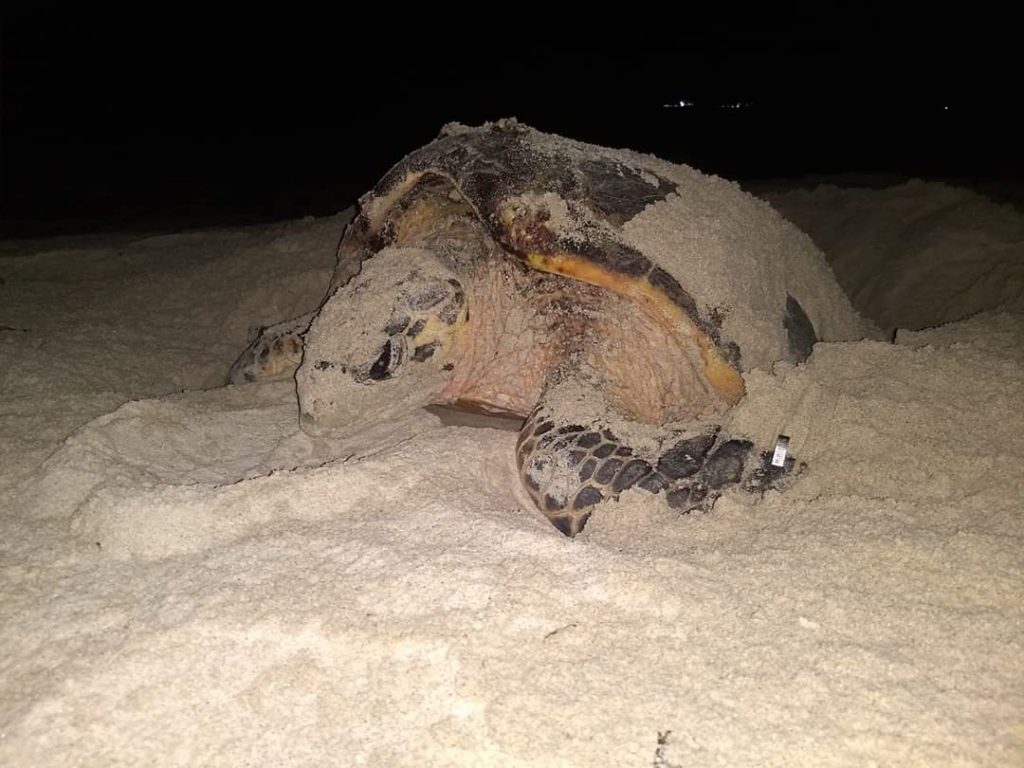
The western edge of Luis’ jurisdiction is a kilometer of perfect nesting sand. But yet again, this comes coupled with a threat: artificial lighting synonymous with human habitation. Running parallel to the beach is a wide road, one of the main arteries into Seybaplaya, with twin-headed street lights placed every 10 meters or so along its center. These lights have been in operation for 5 months. A year ago Luis put in a request for special lighting with a reduced glare, his call was answered with the installation of brighter, bigger street lamps the light from which floods the beach, no more than 15 meters away. Turtle hatchlings, navigating by moonlight, are easily drawn into the road by electric lights, right into the path of oncoming traffic. Luis also pleaded for a net fence to catch the turtles before they reach the tarmac – this too remains pending.

And then there are the broader threats, products of global capital, none greater than the oil by-product which is so internationally ubiquitous. Under the palms, floating in the brilliant blue water, amidst the myriad of tropical shells – plastic is everywhere. This can pose a physical obstacle as well as more insidious hazards. Beaches with a vast amount of the mass manufactured debris can produce a mortal obstacle course for the tiny hatchlings. It is also all too often the case that piles of plastic prevent turtles from leaving subterranean nests and when ingested, cause suffocation and death for hungry young turtles foraging for food.
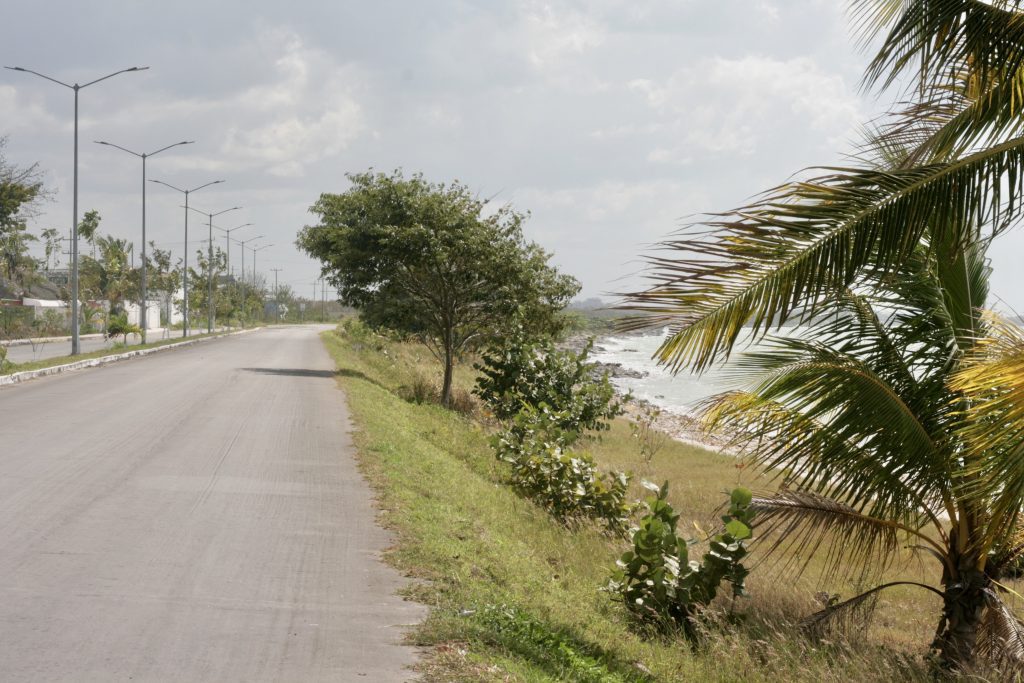
Of the six dead adult turtles that Luis has personally discovered recently, one had been killed by propeller strike and the other five had been drowned due to fishing, specifically an illegal technique similar to drag netting. Fishermen arrive at night, cast out large nylon nets and reel in whatever is caught just before the sun rises so as to avoid authorities. Sometimes they pull up drowned Hawksbills which have become tangled with the rest of their catch. This is not common practice within the fishing community Luis has grown up alongside. Conventionally, fishermen use much smaller nets and work during the day – easily spotting and removing trapped turtles. Historically, Hawksbills were sought after for their brilliant shells which were worth a fortune on the open market. Although this practice has been outlawed since 1977, darling opportunists will still harvest shells if possible. However, fearing imprisonment, most illegal fishermen now simply throw drowned turtles back to sea – shells are not their livelihood.
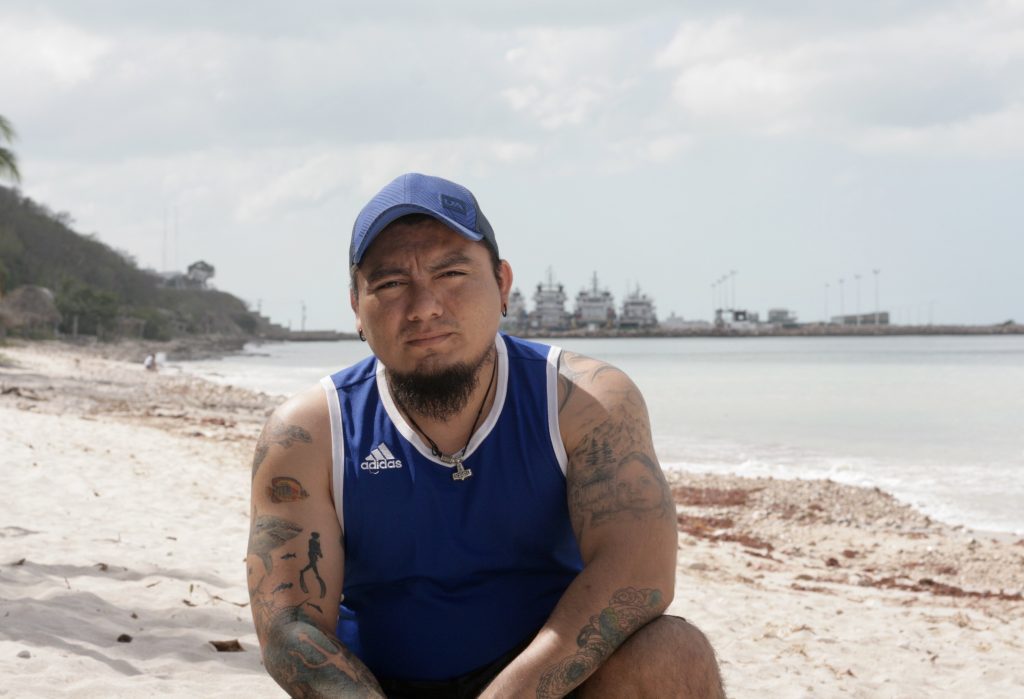
In a more local context, Campeche’s environmental department attempts to coordinate the turtle’s defence state wide. Hounded by the bureaucracy of government and incessant restructuring, the department currently operates under the acronym SEMABICC (Secretary of the Environment, Biodiversity and Climate Change). SEMABICC runs a total of 13 turtle camps in Campeche state but they suffer from limited resources and splintered interests, and Luis is not paid. He runs these programmes because he sees the importance in them, not because he has anything to gain. In general, the vicissitudes of current government practice do not bode well for long-term conservation efforts.
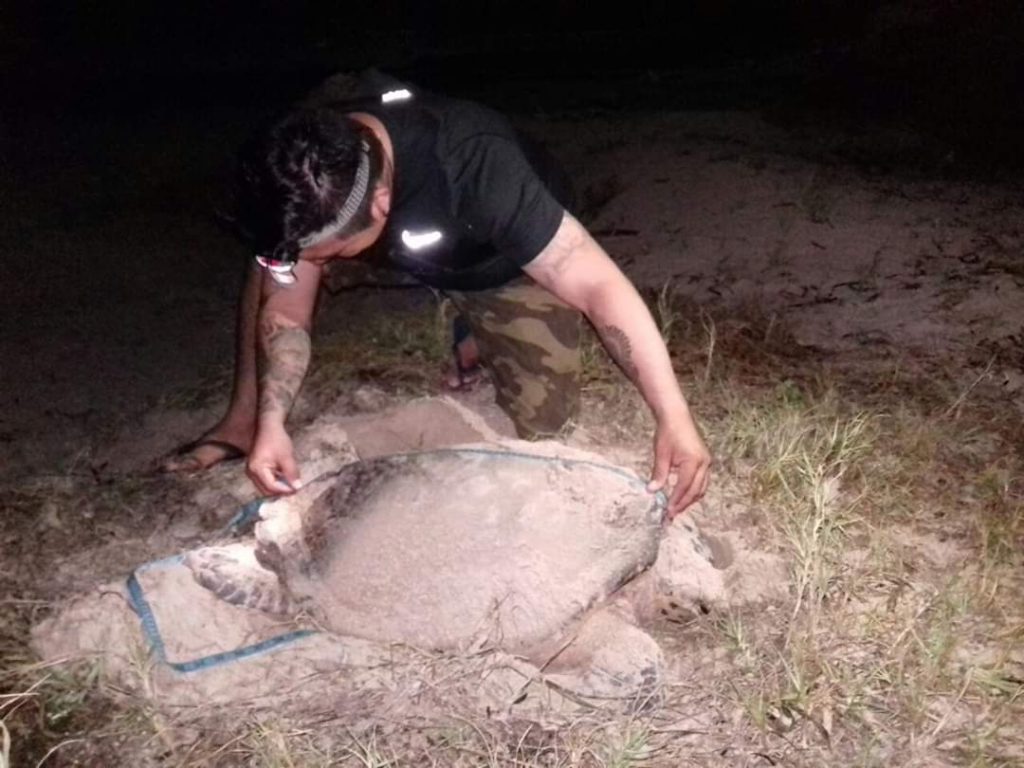
Luis rises to the challenges brought about by the indifference of the holiday-makers and the sluggishness of the authorities. On top of his day job, he invests hours a night guarding turtle eggs. Yet having worked on conservation in Seybaplaya for 8 years, he knows the lay of the land, the safest beaches to release turtles, and to keep a keen eye on the moon. All this experience and knowledge allows Luis to work efficiently, without making wasted trips to untroubled stretches of coast. If they emerge during the day, the newborns will be prey to – among others – dogs, seagulls, Tlacuaches (a possum like creature), not to mention the mercy of the blistering sun. To counter this, Luis will often ferry a cool-box full of hatchlings to his house to be released on Payucan after dark – he does this for some 6 clutches a season. The same counter measures are employed if a nest is too close to the waterline and at risk of flooding. Equally, if he sees a group near the road, he will gently redirect them. Everybody knows Luis is the animal guy – if anyone in the town sees turtles emerge from the sand, a rattlesnake stuck in a drain pipe, or an iguana in a wall cavity – he’s the first to call.
This is not just a passion, but a scientific study too. With a degree in biology from the Autonomous University of Campeche and a special interest in reptiles, he is anything but an amateur. He continuously records the activity of this endangered species. In the last four years alone he has tagged 24 adult turtles, a complicated undertaking which he conducts skillfully with nearly a decade of practice. Since 2016 he documents an average of 40 nests a year – these numbers fluctuate naturally as sea turtles often go years without nesting. With between 50 and 160 clutches of eggs per nest, he calculates a rough total of around 13,450 hatchlings safely escorted to the sea, a mammoth achievement.
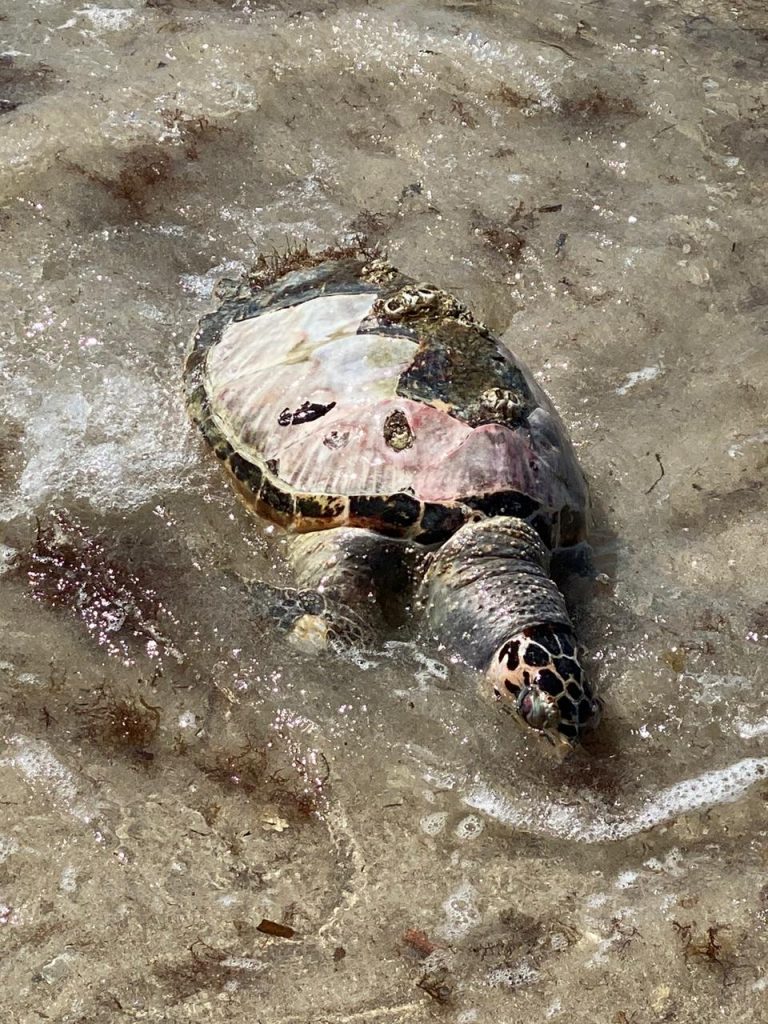
But Luis can’t be everywhere at once, so to aid his efforts, he relies on volunteers. Three or four times a year he raises a posse of some 30 people via social media and word-of-mouth to clean the beaches. Volunteers come from the immediate community and from a local highschool to give him a helping hand. It takes around 60 days for eggs to hatch and during this time the nests need to be regularly monitored. It is near-impossible to maintain a constant volunteer base over this length of time, so this is where help comes from outside: occasionally SEMABICC will send some helping hands, a network of 5 or 6 of his close friends aid whenever they can, and also contributing is Ninth Wave, an NGO based in Campeche which regularly sends volunteers to assist. Fantastic murals, painted by the volunteers on the seawalls, pay homage to their ongoing mission.
“I am like Splinter”, the sensei of the teenage mutant ninja turtles, he says, grinning widely, and with thousands of turtles saved by Luis’ efforts, nobody can refute this title. But with oil spills in the gulf causing habitat destruction and predators and poachers terrorising land and sea alike, how do the hatchlings fare once they’ve left his protection? Turtles only begin to lay eggs at the age of 20 years, it’ll be a long time before the hatchlings Luis has raised return to the shore and their number can be counted.
He has done his part. How many of the 13,000 would have perished without intervention? It is remarkable what the efforts of one person can achieve – vital work for the longevity of this critically endangered species. As the authorities deliberate, Luis acts, and it is this unwavering compassion and dedication which makes a difference. The products of his efforts are beginning to be revealed as communities of fishermen, who have sailed the Gulf for generations, are finally reporting more turtles basking in the cool, crystal, waters of Seybaplaya.
The Yucatan Times
Newsroom
Text by George Chowdhury
Photography by Arianna Russo.
George Chowdhury is a freelance writer currently based in Latin America. With a scientific background he writes quantitative, informative pieces that seek to democratise issues ranging from culture to climate change.
Arianna Russo is a marine biologist and photographer from California and currently works in conservation programs across the Americas.



